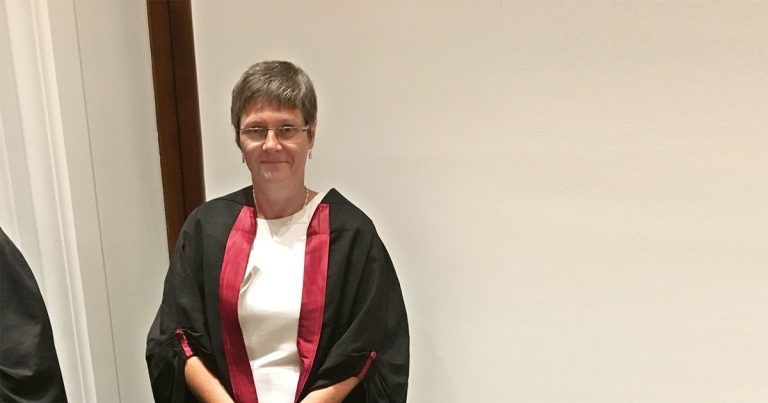17 Jul 2023
Sue Paterson told guests at Royal College Day the sector needed to “sell” itself more to address its current workforce challenges.

Sue Paterson.
The new RCVS president has said she wants to tackle some of the wider “misconceptions” about the profession during her year in office.
Sue Paterson succeeded Melissa Donald at Royal College Day in London on 7 July and told guests the sector needed to “sell” itself more to address its current workforce challenges.
The college has already produced an action plan on the subject and further work in the area is due to be completed later this year.
But Dr Paterson drew on her own experiences to argue that more should be done to promote the professions as a sector for young people from any background, as she named recruitment and promoting wider participation as the themes of her term.
She plans to visit schools and talk to headteachers to promote the profession, adding that she would have booked front-row seats, if that had been possible, for the teachers who advised her to forego her own veterinary dreams.
She said: “We need to get out there and sell ourselves to the wider public.
“Sadly, many of the misconceptions that were there 30 years ago are still there today. If I can use my term to persuade just a few students that veterinary science may be for them then I will feel that I have been able to make a difference.”
The focus on attracting a broader cohort of students comes amid renewed questions about the future structure of veterinary education, following the release of a new NHS workforce plan that supported the idea of four-year medical degrees instead of the present five.
Appearing before a parliamentary select committee on 4 July, Dr Donald acknowledged there may also be a case for shorter veterinary degrees or a move away from the principle of omnipotential, while the college has said it will monitor the plan’s progress.
But in her final speech as its president, Dr Donald said the calibre of current veterinary students and education was “vastly superior” to what had preceded it.
She described the profession as “small, but mighty”, as she cautioned that the range of factors that have contributed to the current workforce crisis meant no solution was easy.
She said: “The real situation is there is not one single thing that has caused the over-stretching of our resources.”
She also argued that new training and CPD structures should help new graduates in attempting new procedures as she urged young professionals not to succumb to “paralysis by analysis”.
She said the sector should encourage progress rather than perfection, adding: “You can’t learn if you never try.”
A potential solution to the workforce crisis was also put forward by the new chairperson of the college’s VN council, Belinda Andrews-Jones, as she advocated both an extension of the work that is carried out by VNs and greater collaboration to advance the profession’s cause.
She said: “If a human nurse can undertake certain acts in full, why can’t we in the veterinary sector, with correct training and qualification?
“For a nurse, the sky is the limit, but only if we work together.”
Her predecessor, Matthew Rendle, also insisted it was not solely for the “bigwigs” in organisations such as the college or the BVNA to drive the fight for change. He added: “Every VN should have their say.”
Earlier in the day, the college’s chief executive Lizzie Lockett said a modelling exercise that had been undertaken as part of the workforce action plan published last year was expected to be completed this autumn.
The project aims to provide forecasts for the likely supply of vets and VNs in the next decade, based on supply and exit trends.
Miss Lockett also highlighted the success of the RCVS Academy project, which completed its first year of operations in June and has already attracted more than 8,000 unique learners to its platforms, and the continuing work to develop a national database of EMS placement providers ahead of the planned implementation of new requirements next year.